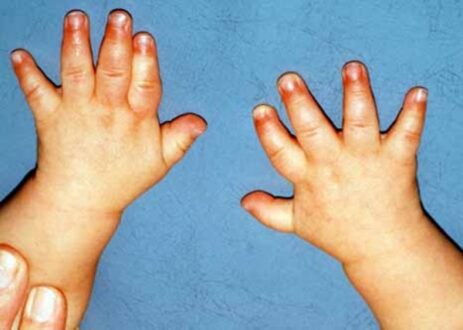Learn all about Prader Willi syndrome. Originally described in the medical literature in 1956, PWS is the first disorder confirmed to be due to imprinting errors. It is the most common genetic cause of life-threatening childhood obesity. The disorder was once known as hypogonadism, hypotonia, hypomentia, obesity (HHHO).
In 1887, Langdon Down described the first patient with Prader-Willi syndrome as an adolescent girl with mental impairment, short stature, hypogonadism, and obesity and attributed these symptoms to polysarcia. In 1956, Prader et al reported a series of patients with similar phenotypes. In 1981, Ledbetter et al identified deletions located between bands 15q11 and 15q13 and determined it to be the site for Prader-Willi syndrome. Scientists think that the symptoms of PWS may be caused by a problem in a portion of the brain called the hypothalamus.
People with Prader-Willi syndrome typically have mild to moderate intellectual impairment and learning disabilities. Behavioral problems are common, including temper outbursts, stubbornness, and compulsive behavior such as picking at the skin. Sleep abnormalities can also occur. Prader-Willi syndrome occurs randomly during the development of the egg, sperm, or embryo. The syndrome is caused by deleted, improperly inherited, or rearranged genetic information. Because the cause is genetically related, there is currently no way to prevent this condition.
Prader-Willi syndrome is caused by a genetic defect on chromosome number 15, which happens purely by chance. The condition is rare, affecting no more than one in every 15,000 children born in England. Boys and girls of all ethnic backgrounds may be affected. Prader-Willi syndrome (PWS) can cause a wide range of problems that will affect your child’s physical, psychological and behavioural development. PWS is associated with a specific process known as genetic imprinting. Normally, everyone has two copies of every gene one received from the father and one received from the mother. In most cases, both genes are “turned on” or active. However, some genes are preferentially silenced or “turned off” based upon which parent gave the gene to the child (genetic imprinting.
Genetic imprinting is controlled by chemical switches through a process called methylation and other chemical changes at the DNA level. Proper genetic imprinting is necessary for normal development. Defective imprinting has been associated with several disorders including PWS. There’s no cure for Prader-Willi syndrome (PWS), but a team of different healthcare professionals will help you manage any problems your child has due to the syndrome, such as overeating, and treat any associated conditions.
Prader Willi syndrome (PWS)
Prader-Willi syndrome (PWS) is a genetic multisystem disorder characterized during infancy by lethargy, diminished muscle tone (hypotonia), feeding difficulties, poor weight gain and growth hormone deficiency. In childhood, features of this disorder include short stature, small genitals and an excessive appetite because affected individuals do not feel satisfied after completing a meal (satiety). Prader-Willi syndrome, which occurs in about one in every 15,000 to 25,000 live births, is the most common genetic disorder that can lead to life-threatening obesity in children. Boys and girls are equally affected. Genetic testing can identify the chance that a second sibling will develop Prader-Willi syndrome, a possibility that is usually less than 1%.
Prader Willi syndrome Symptoms
Prader-Willi syndrome (PWS) is characterized by weak muscle tone (hypotonia), feeding difficulties, poor growth, and delayed development. In later infancy or early childhood, affected children develop an extreme appetite, which leads to overeating and obesity.
Other signs and symptoms of PWS may include:
- mild to moderate intellectual disability
- sleep abnormalities
- unusually fair skin
- underdeveloped genitals
- delayed or incomplete puberty
- short stature
- strabismus
- scoliosis
- small hands and feet
- distinctive facial features such as a narrow forehead, almond-shaped eyes, and a triangular mouth
Prader Willi syndrome Treatment
Prader-Willi syndrome has no cure. However, early diagnosis and treatment may help prevent or reduce the number of challenges that individuals with Prader-Willi syndrome may experience, and which may be more of a problem if diagnosis or treatment is delayed. A typical treatment plan for Prader-Willi syndrome.
- 0-2 years; compensate for the child’s poor ability to feed, and consider surgery to correct undescended testicles in boys.
- 3-5 years; encourage a healthy diet, and usually begin a course of treatment with human growth hormone (HGH) to help growth.
- 6-12 years; behavioural problems usually become more of an issue at these ages, so encourage learning and development as you would with any other child.
- 12-18 years; prepare your child for the transition to adulthood, and manage any obesity-related conditions.
Prader Willi syndrome Life Expectancy
Life expectancy for individuals with Prader-Willi syndrome is normal or near normal. But the literature suggests life expectancy of not past the age of 40.
 Health & Care Information
Health & Care Information



